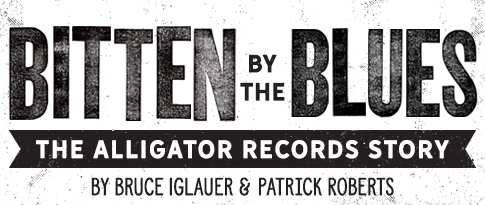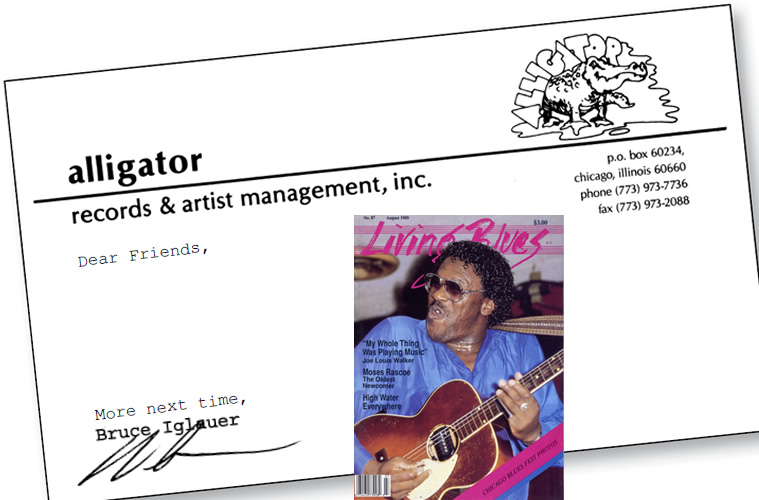Dear Friends
The summer festival season is upon us, which means I actually go get to bake in the sun AND hear blues, too. Goodbye to the bars for a few weeks! I went to the Mississippi Valley Festival in Davenport last week, where I heard wonderful sets by Johnny Shines (his playing is hurting, but his voice is as breathtaking as ever) and Armstrong, Bogan and Armstrong (old but not tired string band music). As usual, the Alligator artists, Jimmy Johnson and A.C. Reed, were excellent, but it’s a rare treat to hear bluesmen of the earlier generation in top form like this. Something’s lost and something’s gained
We just released the long-awaited second album from The Kinsey Report, “Midnight Drive.” It looks like it’s going to be the breakthrough album this band has been working toward for so long. It’s blues, but expanding on the tradition in a way that I think few blues artists have achieved, with elements of rock, funk and reggae, plus some socially-conscious lyrics and a sophisti- cation of arrangement and production that’s expanded since their debut album, “Edge of the City.” I think “Midnight Drive” is going to be a controversial album among hard core blues fans, but will ultimately be considered a classic of “future blues.” Buy it and find out! Meanwhile, those of you who want your energetic young bluesmen to stick a tad closer to the traditions can pick up Kenny Neal’s new one, “Devil Child.”
I think I’ve reminisced enough about the Albert Collins “Ice Pickin’” sessions. We released the album in the fall of 1978 (when Alligator had a staff of two, myself and Mindy Giles), and it sold better than I ever hoped, over 10,000 copies in the first six months. That really meant something in those blues-dry late ’70s (now we expect to sell that many “out of the box” on any new Alligator release or we’re pretty disappointed). Albert came back from California to begin a record-supporting tour at the Midwest Blues Festival at Notre Dame University, driving 2300 miles straight through from Los Angeles to join The
Icebreakers at the college. I remember waiting VERY anxiously backstage for his arrival. He made it on time for the show, but two hours later than I expected him (and he didn’t bother to call to say he was delayed).- I was so worried and frustrated that when he walked in the door I threw a folding chair at him. Glad he ducked! As I recall, Albert went from there on to the East Coast, working at the Bottom Line in New York and every other club we knew of (Alligator was a booking agency then, too, as well as a management company, managing Albert, Koko, Son Seals and others). With his terrific showmanship, the famous 150-long guitar cord, and a great band Albert was a sensation, and he’s never looked back. It makes me awfully proud to remember that when we first hooked up with Albert, he was working as a single artist, driving by himself from city to city with his Telecaster, picking up local bands (like Robert Cray), and just barely making a living. That’s, what Alligator is supposed to do…bring the artist and the audience together.
Next time, I want to begin telling you about my most massive (and one of the most rewarding) projects, the Living Chicago Blues series.
Bruce Iglauer

